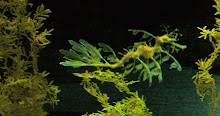
Image- Oil-covered seabird- by Mila Zhinkova- reproduced under the image's Creative commons license 1.2 from http://en.wikipedia.org/wiki/File:Oiled_bird_3.jpg.
The big science/wildlife story for the past few weeks is still the oil spill in the gulf of Mexico; however, according to Anene Ejikeme (writing in The New York Times), Nigeria has a similar problem, but one which continues to be completely overlooked by the world at large.
I came across this paraphrased extract of her article in the British news synopsis magazine “The Week”-
“Imagine if an environmental catastrophe such as the BP oil spill in the Gulf of Mexico occurred every year, in the same place, for decades. That’s what the 30 million inhabitants of Nigeria’s oil-producing Niger Delta “have been living with for the last 50 years”...Since oil exploration began there in 1958, multinational oil companies have spilled roughly 13 million barrels of oil- about 50 times the amount spilled in the Exxon Valdez disaster. The consequences have been devastating. “Dead fish and oily water are part of daily life for Niger Delta residents, as are gas flares” that perpetually illuminate the night sky. “Some middle-ages Niger Delta residents have never had a night of total darkness”. Local people cook and wash with badly polluted water and...drink it. But because they are dirt-poor and powerless, neither oil companies, nor the Nigerian government show much concern about the continuing catastrophe. By far the largest operator in the Delta is Royal Dutch Shell. It operates in 100 countries around the world, yet, according to a study commissioned by Greenpeace, a “staggering” 40% of its oil spills happen in Nigeria. The number of those spilled doubled from 2007 to 2008, then doubled again from 2008-2009. Does anyone care?”
Anene Ejikeme’s full article can be found in The New York Times [HERE-http://www.nytimes.com/2010/06/05/opinion/05iht-edejikeme.html]
Sticking with the (albeit depressing) theme of wildlife loss, the second article I wanted to blog about today is a piece in “The Independent” newspaper by Michael McCarthy. Also a tale of chronic damage to the environment and wildlife-depletion, Mr McCarthy’s story occurs over an even longer time-frame- it is the tale of the massive loss of Britain’s wildlife as a consequence of 500 years of hunting. This paraphrased extract also comes from “The Week” (19th June edition)-
“A melancholy truth hit me last week as I stood in the Louisiana marshes covering the oil-spill story and observed the clouds of herons, egrets and birds of prey swirling above, says Michael McCarthy. It was this: Britain’s wildlife is among the poorest in the world. Yes, what we have is lovely, but there is so little of it. St James’ Park in London has recorded some 65 wild bird species; New York’s Central park has recorded more than 200*. We have 60 butterfly species; France has 250. It’s the result of centuries of “organised slaughter”. From Henry VIII to the First World War, from the Tudor vermin laws to gamekeepers controlling predators on artisocratic shooting estates, “Systematic killing on a scale unthinkable today” was directed at badgers, foxes, hedgehogs, otters, green-woodpeckers, kingfishers, bullfinches”. ..the resulting decline in numbers was further accelerated with the arrival of intensive farming 40 years ago: “half the birds in the fields of England have disappeared since the Beatles broke up”. Britain’s wildlife is “a balm for our souls”, yet it remains a shadow of what it should be”

Cherry trees beside the Lake of St James's Park- Image(c)Victoria Neblik, April 2010.
* I am not wise or informed enough on this subject to presume to give any sort of professional opinion on this subject, but I do think it is worth mentioning that New York’s Central Park is considerably larger than St James’ Park and contains more varied habitat. For example, the densely wooded area of “The Ramble” is unlike anything in St James Park. If people are concerned with the number of species in a given area, the number of different habitat-types is a very important factor. In many ways, this extract is an ideal starting-point for the kind of critical-thinking exercises I used to give students.
The idea that the British were historically either uniquely unrestrained or unusually successful as hunters- compared with –say- other European nations, like France and what is now Germany, also seems an interesting (and questionable) idea. Actaully, as Michael McCarthy mentions, the full details of this idea are set out, not in this article, but in the book "Silent Fields" by Roger Lovegrove.

Coot (Fulica sp.), St James's Park, image (c)Victoria Neblik, April 2010.
I guess part of the point of posting this extract is not so much to disagree with Mr McCarthy's conclusions, especially not on the basis of such a scant overview, but just that the article raises issues about biodiversity, about how science is reported and communicated, as well as a number of interesting biological questions: the kind of questions that are important, as well as being fashionable.
Micahel McCarthy’s full article - "The Tragic Loss of Britain's wildlife"- in "The Independent" is available [HERE]
Both extracts above were taken from (the 19th June Issue of) “The Week” magazine- The Week is on sale [HERE]









No comments:
Post a Comment